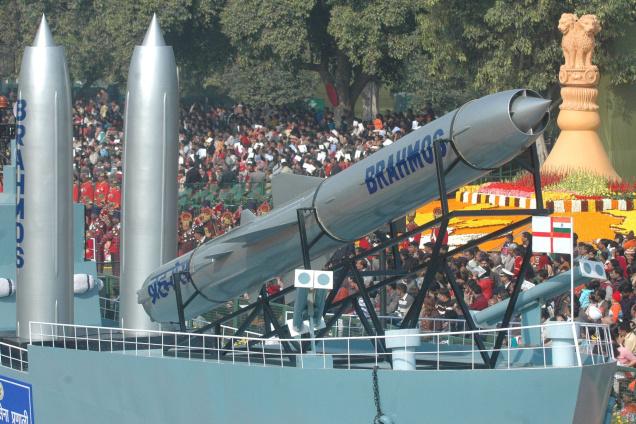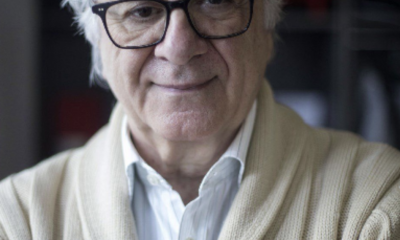India Russia Cooperation
India and Russia ready to land on the moon again
India and Russia are very near to launch the joint moon mission led by India Chandrayaan 2 (Moon Craft). Result of the agreement signed between Indian and Russian space agencies on November 12, 2007 and approved by the Government of Indian on 18th September, 2008, It is is the second Indian unmanned mission and has a projected cost of ![]() 425 crore (US$ 90million) compared to last mission’s
425 crore (US$ 90million) compared to last mission’s ![]() 384 crore. Proposed to be launched in 2013 by India’s indigenous GSLV MK-III (Geosynchronous Satellite Launch Vehicle) will carry a payload of 2650KG including an orbiter, lander and rover.
384 crore. Proposed to be launched in 2013 by India’s indigenous GSLV MK-III (Geosynchronous Satellite Launch Vehicle) will carry a payload of 2650KG including an orbiter, lander and rover.
The five recommended payloads of Chandrayaan-2 orbiter are as follows:
- Large Area Soft X-ray Spectrometer (CLASS) from ISRO Satellite Centre (ISAC), Bangalore and Solar X-ray Monitor (XSM) from Physical Research Laboratory (PRL), Ahmedabad for mapping the major elements present on the lunar surface.
- L and S band Synthetic Aperture Radar (SAR) from Space Applications Centre (SAC), Ahmedabad for probing the first few tens of meters of the lunar surface for the presence of different constituents including water ice. SAR is expected to provide further evidence confirming the presence of water ice below the shadowed regions of the moon.
- Imaging IR Spectrometer (IIRS) from SAC, Ahmedabad for the mapping of lunar surface over a wide wavelength range for the study of minerals, water molecules and hydroxyl present.
- Neutral Mass Spectrometer (ChACE2) from Space Physics Laboratory (SPL), Thiruvananthapuram to carry out a detailed study of the lunar exosphere.
- Terrain Mapping Camera2 (TMC2) from SAC, Ahmedabad for preparing a three-dimensional map essential for studying the lunar mineralogy and geology.
The two scientific payloads on Chandrayaan-2 rover are:
- Laser Induced Breakdown Spectroscope (LIBS) from Laboratory for Electro Optic Systems (LEOS), Bangalore
- Alpha Particle Induced X ray Spectroscope (APIXS) from PRL, Ahmedabad.
It is wrongly believed that Chaandrayaan 2 is the mission to complete the work left by Chandrayaan 1 Since it had lost communication signal with the ground. The mission was approved even before the launching of the first. Almost 97% of the work was completed by the mission 1 which had given enough information to start the mission 2. As the first mission made one of the largest discovery in the space of finding water in the moon, much is expected from this mission as well.
Scroll down if you are looking for comment form, your comment is very much appreciated!!
India Russia Cooperation
Diamond Diplomacy: India and Russia Natural Allies in Reshaping Diamond Industry

India and Russia traditionally enjoy warm relations since the Soviet era. It has been recently due to several geopolitical changes in a short period of time that the two countries are drifting apart. While the two countries maintain an understanding of each other, their priorities and personal interests do not align as much as they did earlier.
In the midst of these global challenges, the two countries have been identifying new trade opportunities and diamond comes as a perfect solution. Unfortunately, both the countries have been struggling to meet their bilateral trade goals, which is mainly military based. Russia is the largest producer of the rough diamond. It’s state-owned diamond mining firm Alrosa accounts for 25 percent of the world output. India, on the other hand, is the leader in diamond processing. 93% of world’s diamond, whether they are in industrial use or in solitaire diamond jewellery, has been on Indian soil once for processing.
Most of the Russian diamond eventually ends up in India for processing which is worth billions of dollars. However, a very small part of it comes via direct import. Most of the Russian diamonds take a long route before arriving in India, thus raising costs. In 2013, direct import of Russian diamond into India amounted at $767 million.
India understands the value of direct import of Rusian diamonds and how this can help grow trade between the two countries, which has not met its potential despite decades of friendly relations. In 2016, India declared reforms ending the roles of intermediaries that were causing roadblocks in the import of Russian diamond. India also created a special customs zone in Bharat Diamond Bourse in Mumbai with relaxed taxation and customs to allow easy import of Russian diamonds. Moreover, India is testing an Israeli technology to ensure a standardised process of grading polished diamonds, which is important given the potential of diamond trade becoming another major area of cooperation between India and Russia.
This new form of diplomacy will create a broader business cooperation involving private players and adding at least $4 billion to $5 billion in trade between the two countries. Currently, 50% of diamonds processed in India head their way to the US market. Russia accounted for only $8.9 million worth export of diamonds from India in 2011 despite Russia having $16 billion worth of diamond retail industry. This makes Russian market impressive for Indian companies making diamond diplomacy a win-win approach.
So if you are going to a jewellery store or buy diamond pendants online, you can thank this low profile diamond diplomacy between India and Russia.
India Russia Cooperation
Reinvigorating the Indo-Russian camaraderie
India and Russia have been de facto geopolitical allies with the alliance dating back to Cold war era. Last week’s visit to India at the annual bilateral meeting by Vladimir Putin was as strategic as it has been symbolically perceived by the world. It has proved the mettle of Indian and Russian ties reconciling a strong partnership despite the ongoing global geopolitical realignment.
The Indo-Russian annual bilateral meeting came at a time when Russia is battling with the ghosts of plummeting oil prices and facing the heat of Western sanctions springing from her Crimean annexation. On the other hand India is trying to catalyse her economic growth and improve her global standing under the new leadership. There have been hiccups in Indian and Russian friendship given the recent developments. Russian trade and arm deals with China and Pakistan respectively have irked India while India’s decision to buy Rafale fighters and Apache copters from France and US have met disapproving bristles from Russia. The meeting hence came at a very crucial juncture for both the countries.
Putin’s visit that spanned less than 24 hours has definitely boosted the Indo-Russian ties with more strength. Putin brought along with him a delegation of 15, comprising of Russian business magnates to attend the summit. Putin-Modi meeting at the summit culminated with 20 agreements being signed by the leaders. Narendra Modi went on to say that Russia shall remain the biggest defence supplier to India. India and Russia signed major agreements on nuclear energy, crude oil and gas, defence, fertilizers, diamonds and space.
Russia will be building 12 nuclear plants in India over the next two decades as per the nuclear agreement. Another major agreement involves Russia building her multi-role aircrafts in India; this would be first major defence project under Modi’s flagship scheme, “Make in India”. Russia’s state-owned Rosneft would be supplying 10-million-tonnes of oil per year to India. Apart from that joint hydro-electric power projects have been agreed upon. Both leaders have agreed upon a decadal roadmap to transform and improve the Indo-Russian bilateral trade.
The trade and defence agreements show the vision of both the leaders to take the Indo-Russian relations to a higher trajectory. Certainly sends out a clear message about India and Russia being all-weather allies.
India Russia Cooperation
Why India should choose Russia over USA

India’s relations with the Soviet Union can be traced back to the 15th century when the Russian merchant Afanasy Nikitin visited Northern India and published an account of his travels. Soviets started developing friendly relationship with India since 1950s. The government of India approached the Soviet Union only when it got disgusted with the Anglo-American attitude of patronizing Pakistan at the cost of India because the latter had the courage to take independent line of action on several world issues. India and the Soviet Union exchanged military attaches in their respective embassies in 1955. By now India had signed numerous pacts with USSR. The weapons and defense equipment provided by Soviets were cheaper than that of the Wests. The Soviets also provided facilities to assemble the aircrafts and other equipment in India and gave training to Indian soldiers to operate sophisticated weapons. They dealt with India in soft currency unlike other countries who demanded hard currency. This system continued even after collapse of Soviets and development of Russia. The Russians considered India as an ally and continued selling weapons to India. Russia is India’s biggest arms supplier. This helps Russia to maintain its economy and fund its weapons industry. In recent years, India had been trying to develop its own aircraft with the help of the Russians. In the defence arena, the Indo-Russian relations have evolved from buyer-seller relationship to joint collaborators in such big-ticket projects as Fifth Generation Fighter Aircraft (FGFA) and BrahMos missile. The biggest USP of Russia for India is while other countries are reluctant to transfer technology; the Russians do it without any fuss.
India cannot afford to sacrifice the current military cop-operation with Russia. In material technologies and strategic raw materials inheritance, Russian strength is well acknowledged, Russia is far better source for easier technology transfer than what India can ever hope from USA. One cannot forget that George W. Bush is pensioned and the U.S. Congress has a substantial chunk of Congress members heavily opposed to India’s nuclear power status due to India’s positions on NPT and CTBT. Moreover, India got itself tied-up with the Russians. India will need Russian support, be it on Kashmir or other matters at the UNSC, if India radically sways away from Russia, Vladimir Putin could anytime open up Pakistan military aid option. One cannot decline to discern that Russia is a factual Eurasion power enjoying the largest land mass in the world. It may possibly have the largest nuclear submarine fleet and one does not know how many Russians submarines are floating around India or the USA. Hence, irritating one such as Russia is out of question for India. Though, such an event doesn’t seem possible in the near future because Russia has always been friendly to India even during Soviet times when Uncle Sam looked the other way supporting Pakistan dictatorship against India. Any India connivance with a pro-America military alliance will cost us blood and other economic problems. India’s friendship with Iran and Afghan would get strained. This would result in decrease in supply of oil from Iran as India will have to follow USA’s policy of sanctions on Iran and it will also make hostile situations between India and Muslim countries. On the other hand, Russia supports both, Iran and Afghan. Russia has long been an invited observer of OPEC meetings and know their Arab friends quite well.
Russia’s game in the world is open. Nonetheless, it does not foreclose India’s military cooperation with democratic forces in Asia vis-à-vis a potential Chinese power aggression. India needs to culture Russian relationship deeper so that it works as an antidote to any possible Sino-Pak aggression on India. American help in such a situation would mean confrontation, a Russian help peaceful compromise. If both China and Pakistan were to gang-up on India, the US, in order not to risk a nuclear war, will stay neutral. Russia, on the other hand, would provide intermediary help, because Russia has a certain strategic leverage on China. China needs Russia’s strategic alliance for SCO (Shanghai Cooperation Organization) to succeed. The SCO is a Eurasian Silk Road, which in the long run expectedly change the entire economic landscape of Eurasian continent, guaranteeing economic future of all involved. Why should India forego a chance for that reality by entering into U.S.–tailored Asian defense alliance principally designed to torpedo such developments to keep up U.S. predominance.
Moreover, USA is one of the most self-centric country in the world. History is witness that USA is not a reliable partner in several areas, politics, military and hardware spare parts. India will be optioned to buy whole-system units at high prices, probably with loans from US Banks to get India mortgaged to the US as a permanent financial slave. Whenever and wherever US helped, it made sure it got something solid in return.
Russia is a much more reliable partner as it has helped India on several occasions in many fields, politics, military, business, etc. Let it be the 1971 War with Pakistan or Nuclear tests or many other fields, it was Russia and former Soviet Union which stood by India and helped it to come over hard times. India will have to choose its friends and foes carefully in order to succeed in this modern world.
TWR Note: Articles under students’ column are written by school going students. Readers and commenters are requested to maintain healthy debate avoiding the use of improper language. Please stay away from directing personal attacks.
-

 Business11 months ago
Business11 months agoHow To Future-Proof Your Business With The Right Tools
-

 Travel10 months ago
Travel10 months agoTravelling from San Antonio to Guadalajara
-

 Travel7 months ago
Travel7 months agoTravel wellness tips for a healthier and more enjoyable journey
-

 Europe5 months ago
Europe5 months agoRecent Books by Boaventura de Sousa Santos: Law, Colonialism, and the Future of Europe



